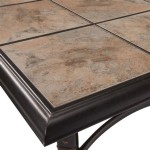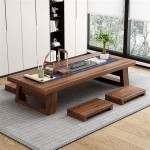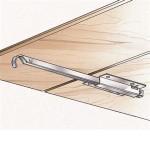Dining Room Table Centerpiece Ideas: Elevating Your Dining Experience
The dining room table serves as a focal point in the home, a gathering place for meals, conversations, and shared moments. As such, the centerpiece displayed upon it holds significant visual weight, influencing the overall ambiance of the room. Selecting the appropriate centerpiece requires careful consideration of factors like table size, room style, and personal preferences. A well-chosen centerpiece should complement the existing decor, enhance the dining experience, and reflect the homeowner's aesthetic sensibilities.
The purpose of a dining room table centerpiece extends beyond mere decoration. It establishes a mood, provides a visual anchor, and can even spark conversation. A carefully curated centerpiece can elevate a casual weeknight dinner into a more special occasion, or it can serve as a sophisticated backdrop for formal gatherings. Therefore, understanding the principles of design and the various options available is crucial for creating a centerpiece that effectively serves its intended purpose.
Understanding Principles of Design for Centerpieces
Creating an aesthetically pleasing centerpiece involves applying fundamental principles of design. These principles ensure visual harmony and balance, preventing the centerpiece from feeling cluttered, overwhelming, or out of place. Key considerations include scale, proportion, color palette, texture, and symmetry (or asymmetry).
Scale refers to the size of the centerpiece in relation to the table. A small table requires a smaller, more delicate centerpiece, while a large table can accommodate a more substantial arrangement. Proportion relates to the relative sizes of the individual elements within the centerpiece. Maintaining a sense of proportion prevents any one element from dominating the others and ensures a balanced appearance. Color palette is crucial for creating visual harmony. The colors chosen for the centerpiece should complement the colors in the dining room and the overall aesthetic of the home. Consider using a monochromatic scheme for a sophisticated look, or incorporating complementary colors for a more vibrant effect. Texture adds visual interest and depth. Mixing different textures, such as smooth glass, rough wood, and soft foliage, can create a more engaging and appealing centerpiece. Finally, symmetry and asymmetry can both be effective, depending on the desired effect. A symmetrical arrangement is often more formal and traditional, while an asymmetrical arrangement can create a more modern and dynamic feel.
Beyond these core principles, consider the shape of the table. A long, rectangular table benefits from a longer, linear centerpiece, while a round table works well with a circular or symmetrical arrangement. Experimenting with different layouts and configurations allows for personalization and ensures the centerpiece reflects the homeowner's individual style.
Exploring Different Centerpiece Styles and Elements
The possibilities for dining room table centerpieces are vast, ranging from simple and understated to elaborate and dramatic. The style should align with the overall decor of the dining room and the homeowner's personal taste. Several popular styles and elements can be incorporated to create a unique and impactful centerpiece.
Floral arrangements are a classic and versatile choice. Fresh flowers bring natural beauty and a touch of elegance to the dining room. The type of flowers, their color, and the arrangement style can all be customized to suit the occasion and the decor. For a more contemporary look, consider using a single dramatic bloom in a minimalist vase. For a traditional setting, a more elaborate arrangement with a variety of flowers and foliage can be appropriate. Artificial flowers offer a low-maintenance alternative, providing year-round beauty without the need for watering or replacement. Choosing high-quality artificial flowers is key to achieving a realistic and elegant look.
Candles are another popular element for dining room table centerpieces. They create a warm and inviting ambiance, perfect for romantic dinners or cozy gatherings. Pillar candles, taper candles, and votive candles can all be incorporated, either individually or in groups. Consider using different heights and shapes of candles to create visual interest. Candle holders can also add to the overall aesthetic, ranging from simple glass designs to ornate metal or wooden holders. Battery-operated candles provide a safe and convenient alternative to traditional candles, eliminating the risk of fire and the need for constant monitoring.
Natural elements, such as branches, pebbles, shells, and fruits, can bring a touch of the outdoors into the dining room. A simple arrangement of branches in a vase can create a dramatic and sculptural centerpiece. A collection of pebbles and shells in a glass bowl can evoke a sense of tranquility. A bowl of fresh fruit can add color and vibrancy to the table. These natural elements can be combined with other elements, such as candles or flowers, to create a more complex and interesting centerpiece. Seasonal elements, such as pumpkins in the fall or pine cones in the winter, can be incorporated to reflect the changing seasons.
Other potential centerpiece elements include decorative bowls, trays, sculptures, and even books. A decorative bowl can be filled with potpourri, decorative balls, or other small items. A tray can be used to display a collection of candles, vases, or other decorative objects. A small sculpture can add a touch of artistry to the table. A stack of coffee table books can create a sophisticated and intellectual atmosphere. The key is to choose elements that reflect the homeowner's personal style and complement the overall decor of the dining room.
Practical Considerations and Maintenance of Centerpieces
Beyond aesthetics, practical considerations are important when selecting and maintaining a dining room table centerpiece. The centerpiece should not obstruct views or interfere with conversation. It should be easy to clean and maintain, and it should be durable enough to withstand everyday use.
The height of the centerpiece is a crucial consideration. A centerpiece that is too tall can block views across the table and make it difficult for guests to converse. As a general rule, the centerpiece should be no more than 12-14 inches tall, or low enough that guests can easily see over it. If a taller centerpiece is desired, consider using a narrow base or a transparent container to minimize the obstruction.
The size of the centerpiece should be proportionate to the size of the table. A large centerpiece can overwhelm a small table, while a small centerpiece can get lost on a large table. Consider the overall dimensions of the table and choose a centerpiece that is appropriately sized. If the table is used for dining on a regular basis, consider a smaller, more compact centerpiece that will not take up too much space. If the table is primarily used for special occasions, a larger, more elaborate centerpiece may be appropriate.
Maintaining the centerpiece is essential for keeping it looking its best. Fresh flowers should be watered regularly and wilted blooms should be removed. Artificial flowers should be dusted regularly to prevent them from becoming dusty or faded. Candles should be trimmed regularly to prevent them from smoking. Any spills or stains on the centerpiece should be cleaned up immediately. Regularly rotating the centerpiece or rearranging the elements can help to keep it looking fresh and interesting.
Adaptability is also important. A centerpiece should be adaptable to different occasions and seasons. Consider having a few different centerpieces that can be rotated throughout the year, or choose a centerpiece that can be easily modified by adding or removing elements. This allows the homeowner to keep the dining room looking fresh and updated without having to completely replace the centerpiece every time.
Ultimately, the best dining room table centerpiece is one that reflects the homeowner's personal style and enhances the dining experience. By considering the principles of design, exploring different styles and elements, and taking into account practical considerations and maintenance, the homeowner can create a centerpiece that is both beautiful and functional.

Beautiful And Easy Dining Room Table Centerpiece Ideas Stonegable

Dining Room Table Decor Ideas How To Decorate Your

Beautiful And Easy Dining Room Table Centerpiece Ideas Stonegable

23 Winter Centerpiece Ideas Diy Table Decorations

19 Ideas For How To Decorate A Dining Room Table Everyday Hen And Horse Design

30 Simple Dining Table Centerpiece Ideas For A Welcoming Appeal

Classy Kitchen Table Centerpiece Ideas For Everyday Start At Home Decor

Today We Are Showcasing 25 Elegant Dining Table Centerpiece Ideas Eoy And Get Room Centerpieces

5 Rustic Farmhouse Centerpieces Anyone Can Make Grace In My Space

Dining Room Table Centerpieces








